Oct 13, 2024
Just listened to the Bundestag’s session on “Änderung des Befristungsrechts für die Wissenschaft” (discussion in German Parliament regarding the proposed changes to the law limiting how long one can be employed without a permanent contract in science), and I would argue that those two hours were wasted not only by myself but also by all participants.
Anyway, I decided to waste a bit more to express my opinion on the issue which can hopefully be useful to younger colleagues who are not through their PhDs yet. A long rant which you don’t have to read :)
For those unfamiliar with the issue, the origin of the law/discussion is that current practice of keeping people on short-term contracts for tens of years (or indefinitely) is perceived as unfair to individual researchers and hurting the competitiveness of German academia as a whole. First attempts to fix the system (i.e. in the form of so-called Wissenschaftszeitvertragsgesetz = WissZeitVG = Academic Fixed-Term Contract Act) date back thirty years or so, but apparently were never very successful as the discussions that a reform is urgently needed were ongoing ever since.
The basic idea of WissZeitVG (i.e. the core of the proposed solution) is to legislatively limit the duration one can spend in academia after a PhD to some period. This is currently 6 years before the PhD is obtained and 6 years after. The idea is that during this period, it shall become clear whether one is fit for the job (qualification phase) or shall leave academia and do something useful. However, while the declared intention (protect researchers by allowing them to get a home and kids, which is a bit complicated if your contract runs out in 1-2 years and let them more easily/earlier change career paths, thereby making academia more attractive) is good, the execution is not flawless. Consider, for instance, a case when someone builds and operates a complex bit of hardware (accelerator or microscope, whatever), who is also doing research. Per WissZeitVG, such a person is considered a researcher and thus cannot be employed for more than six years unless hired permanently. The idea is to force universities to find money for a permanent position if they need his/her expertise, but in practice, this task is rather complicated in Germany, and thus people are simply not employed after six years. Or, more often, are employed on short-term third-party-funded contracts which are excluded from restrictions. Which, of course, makes WissZeitVG pretty useless if not harmful. For instance, many professors get assistant/researcher positions for the period of their employment to form the core of the research group (i.e. for tens of years!) which are not permanent and cannot be occupied as such even if funding is available. I know many examples when people started in such positions tens of years ago, and after six years moved to and still remain on short-term contracts in the same institution.
The most recent round of changes to legislation was proposed in spring 2024, and many hoped that some substantial changes will be introduced. However, the main things which were proposed to change were:
- reduce the qualification phase after the PhD from 6 to 4 years (can be extendable to 6 providing that permanent position will be guaranteed after that)
- start the clock clock right after the PhD completion rather than after the first time one is employed from non-third-party funds.
Obviously, these changes solve no problems, and arguably make things worse, hence the discussion continues and today’s event was part of it.
As already mentioned, the discussion was, however, a waste of time from my perspective. The main reason is that nobody cares to recognize and discuss core conceptual problems of WissZeitVG:
-
Telling that university must employ someone permanently without providing money for that is kind of hypocritical because this way you put all the risks associated with loss of hiring flexibility from yourself to university. Which do not even have that much flexibility in their income/spending due to other regulations! For instance, in Germany universities do not even set their tuition fees! It is also stupid because it is kind of obvious that in case when University faces a choice whether to accept this risk or not (i.e. by not extending contract of a researcher beyond six years), the former is preferred option. So, whom does WissZeitVG protect?
-
Excluding third party funding from WissZeitVG restrictions makes matters worse because any contract funded by third parties not only costs close to nothing to Universities, it actually brings in some money in form of direct hardware funding and overhead costs! So, why university shall choose to pay someone from their own pocket when they can get someone who not only does the same work for but actually brings in third party money? If you’re a PhD or a postdoc hoping to get a permanent position by just doing great research, read the above once again. Basically, hiring you is unsustainable from economical perspective for universities, and advertisement in form of positions in research rating (the only tangible benefit of your work to Uni administration) is of much lower value than new infra structure which you can show to prospective students.
-
It is often said, and was mentioned today several times, that driving young researchers out of academia is actually a good thing for German research. That’s because people leave either to industry (good for the economy but not for research, and whether you need a PhD or postdoc experience in industry is a big question), or abroad, where they gain valuable experience to later return and head spear research groups. The latter actually does happen (90% of short lists for professor positions in Germany I’ve seen recently are German nationals trying to get back from places like South Africa, Australia, etc.), but who returns? The best of the best actually end up in places Harvard, etc., i.e. that’s a loss to German research. Those who return do get their positions, thus proving to others that one must go abroad to have a chance. Does it make academia more attractive for those who stay? Especially for foreigners who came to Germany to build research career and stand no chance?
-
Speaking of foreigners, I’m one, and I did not realize that there’s such a thing as WissZeitVG until a couple of years after the completion of my PhD. And it took me longer still to understand the rules of the game. Not because they’re very complicated, but because there’s actually little information in non-bureaucratic (un-understandable) German, and because I was busy doing actual research! And by the time I realized how things work, some career choices were already made, so I had either to fix losses and go to industry or gamble for success on a sub-optimal path. And I’m not alone: I’ve had a chance to interact with tens of students, and most are either completely unaware or only have a surface understanding of these issues (including Germans, actually). If you aim to protect the careers of young researchers, making the system transparent shall be of the top priority, right? Not at all! Everyone speaks only that Germany is a great place to do scientific research to attract foreign talent (was also said several times today, and PhD salaries are indeed almost too good!). The problem is that “attract” means also “exploit” in this case (because of the questionable career perspectives). Which is totally fine but a bit hypocritical if you’re working on a law with a formal objective to combat exploitation.
There are also other issues, but the post is getting too long already, and my point is not to criticize every aspect of WissZeitVG, which has been criticized enough without me. In fact, I do not really know how to solve the main problem which it actually attempts to solve (i.e. guarantee sustained creativity and eagerness of researchers even if they are granted permanent positions), and I doubt anyone knows. What I know is that there is no justification for the motto “permanent positions for permanent tasks” (voiced several times today): research and progress are permanent tasks! And, unfortunately, researchers need some security to do it well, so cheaping out is not an option. lsYes, research is expensive, but in the end, almost everything that surrounds us is a product of fundamental and applied research, so the benefits are obvious!
Mar 05, 2024
I've always wanted to publish a single-author paper, just to mark an imagionable checkbox somewhere.
So now it's at least submitted. The draft accompains the actually useful part of this work, i.e. the tool itself
now (and hopefully forever) accessible on our institute's web page:

Dec 02, 2023
Well, my spirit is honestly even lower than usual at the end of a year (very
productive and successfull scientifically!) for a number of reasons.
But, SpIRIT, a path-finder for HERMES Gamma-ray burst detection constellation with heavy involvement of IAAT
has been launched launched aboard SpaceX Falcon 9 rocket yesterday!
Congratulations to the collegues - flying Tübingen hardware in space is always exciting!
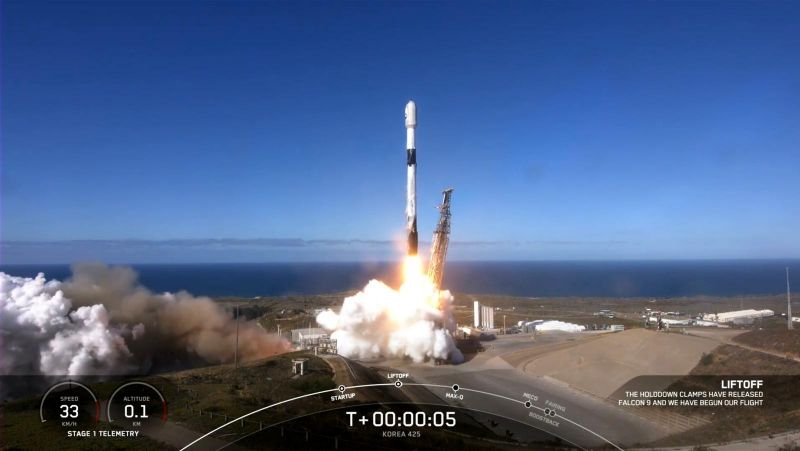
Nov 07, 2023
A follow-up of our first IXPE paper on Her
X-1, a beatiful
analysis mostly done by Jeremy Heyl, but
also with yours truly participation. With more IXPE data and more careful
analysis, we show that there's direct evidence that the 35-day-period is set by
the free precession of the neutron star crust, which has the important
implication that its crust is somewhat asymmetric fractionally by a few parts
per ten million. Furthermore, we find indications that the basic spin geometry
of the neutron star is altered by torques on timescale of a few hundred days.
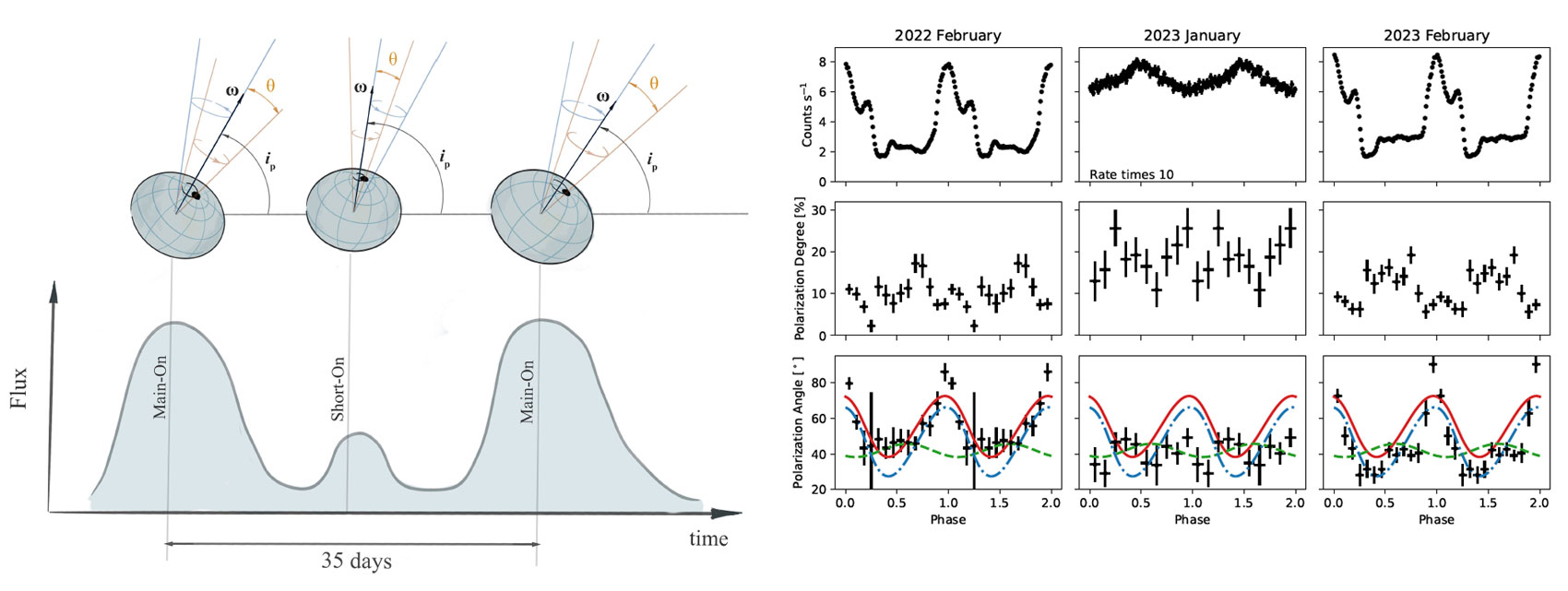
Sep 26, 2023
With the help of two Chandra observations separated by 13 years, we were able to measure the expansion rate and rapid variability of brightness of
individual X-ray filaments in a VERY peculiar supernova remnant (SNR) HESS J1731-347. That's the same one which hosts a strange star candidate we found earlier.
Measuring expansion rate implies that we can measure expansion velocity and age of the remnant and compact object at the centre and may have important implications for our understanding of
neutron/strange star cooling. On the other hand, observed rapid variability implies that the magnetic field around the filaments is very strong and must be able to contain not only electrons but also
heavier particles during acceleration. Potentially up to PeV energies! The results have been published in A&A.
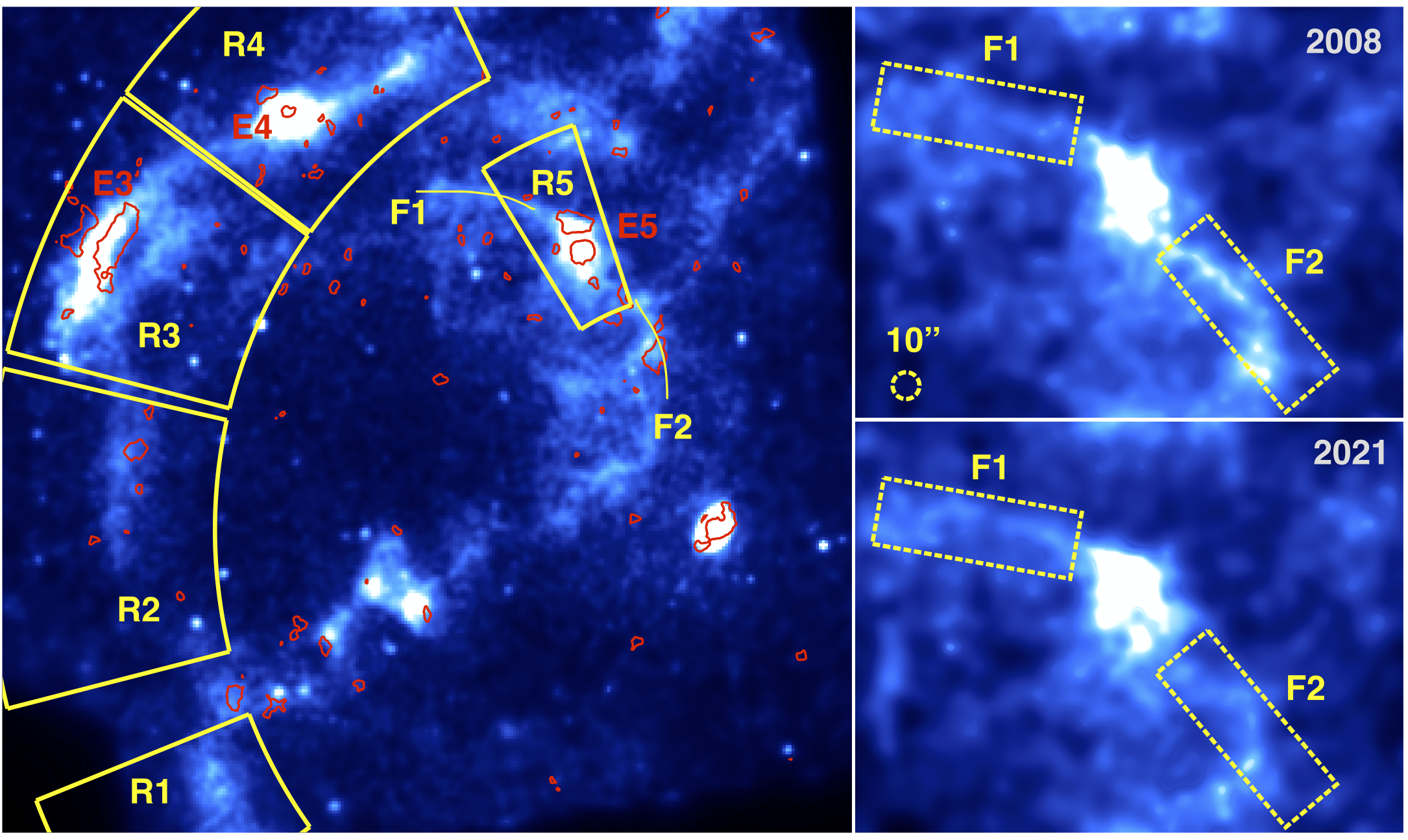
Jul 03, 2023
We've just published the best quality IXPE
data and most sophisticated phase-resolved analysis of an X-ray pulsar to date!
With some luck with outburst timing we were able to catch this transient at two
different luminosities, and, surprisingly, not only the pulse profiles (which
is quite common for Be-transients) have changed, but also polarization properties turned out to be completely different in two observations!
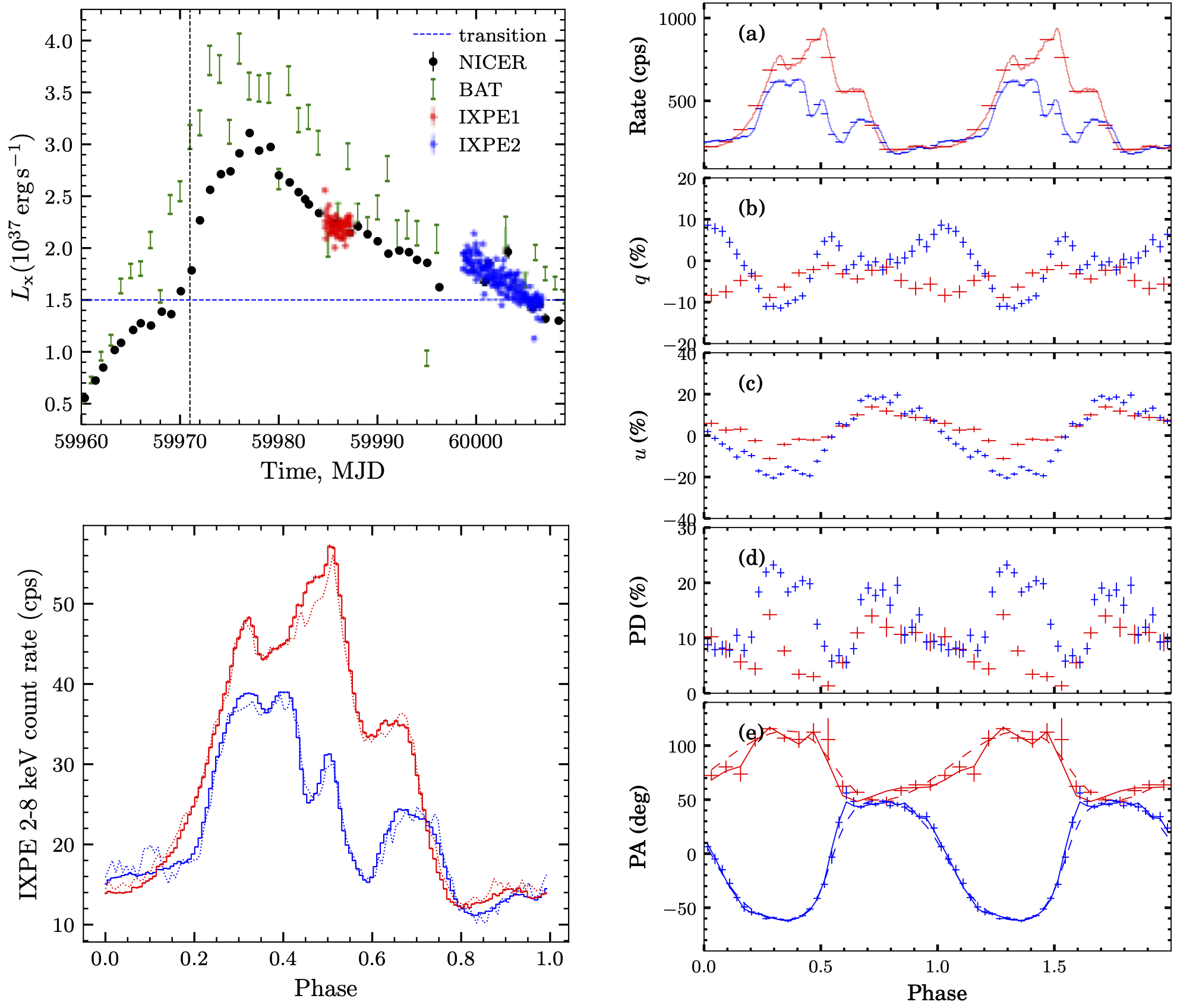
Our first reaction was that something VERY strange is going on, i.e. crazy
precession of the neutron star, or glitch, or something even more unexpected...
However, careful analysis confirmed that phase of the pulsar does not change
and there is apparently noting unusual going on with pulse profiles. On the
other hand, the observed changes in polarization angle can be explained if
there is additional polarized component in the observed emission. We attributed
it to scattering in strong winds/outflows which have been known to be present
in luminous XRPs since a while and is apparently present in first observation
of RX J0440.9+4431. This allowed not only to describe what we see in IXPE data,
but also to obtain very tight constrains on geometry of the pulsar AND binary
system. The fact that in second observation the observed PA dependence matches
predictions of rotating vector model so perfectly also strongly suggests that
QED effects suggested to define polarization in all magnetic rotators observed to date (pulsars, magnetars) are, in fact, real!
Mar 28, 2023
A huge work by my PhD students Arthur Avakyan and Marvin Neumann
finally materialized as most detailed and up-to-date catalogus of low-mass (LMXBCat) and high-mass (HMXBCat) X-ray binaries.
The full versions of catalogs can be found at XRBCats project web-page which has a very cute logo in my opinion :)

Nov 03, 2022
And another IXPE paper. We report observation of the closest and X-ray brightest Compton-thick active galactic nucleus (AGN), the Circinus galaxy. This time significant polarization is detected at a level of ~30 per cent (at 68 per cent confidence level) for the neutral reflector, with a polarization angle of 18 deg, roughly perpendicular to the radio jet. A comparison with Monte Carlo simulations of the polarization expected from the torus shows that the neutral reflector is consistent with being an equatorial torus with a half-opening angle of 45°-55°. This is the first X-ray polarization detection in a Seyfert galaxy, demonstrating the power of X-ray polarimetry in probing the geometry of the circumnuclear regions of AGNs, and confirming the basic predictions of standard Unification Models.
Oct 18, 2022
Valery Suleimanov has finally pushed a very important theoretical paper required for proper modeling of any emission from X-ray pulsars. All relevant physical processes one could include are included and calculated opacities are made available in tabular form for everyone who wants dive into sea of complex radiatively-dominated physics within X-ray pulsars emission regions!
Sep 15, 2022
Another exciting result from IXPE! A pretty large polarization from Mrk~421 (factor of three larger than in other bands) was surprisingly detected
 This, and lack of polarization variability, basically means that observed X-rays come from shocks near the very engine of the Blazar whereas emission in other bands comes from further away! A solid result showcasing the power of X-ray polarimetry. Congratulations to Laura Di Gesu, the first author of the paper by IXPE collaboration.
This, and lack of polarization variability, basically means that observed X-rays come from shocks near the very engine of the Blazar whereas emission in other bands comes from further away! A solid result showcasing the power of X-ray polarimetry. Congratulations to Laura Di Gesu, the first author of the paper by IXPE collaboration.
Sep 01, 2022
And another Nature astronomy paper, this time without
a large collaboration. In fact, it comes in the same volume as the Her X-1
paper, which might be the first case when someone published two first author
papers in the single volume of Nature astronomy :) The essense of the paper is
summarized by the title and figure below
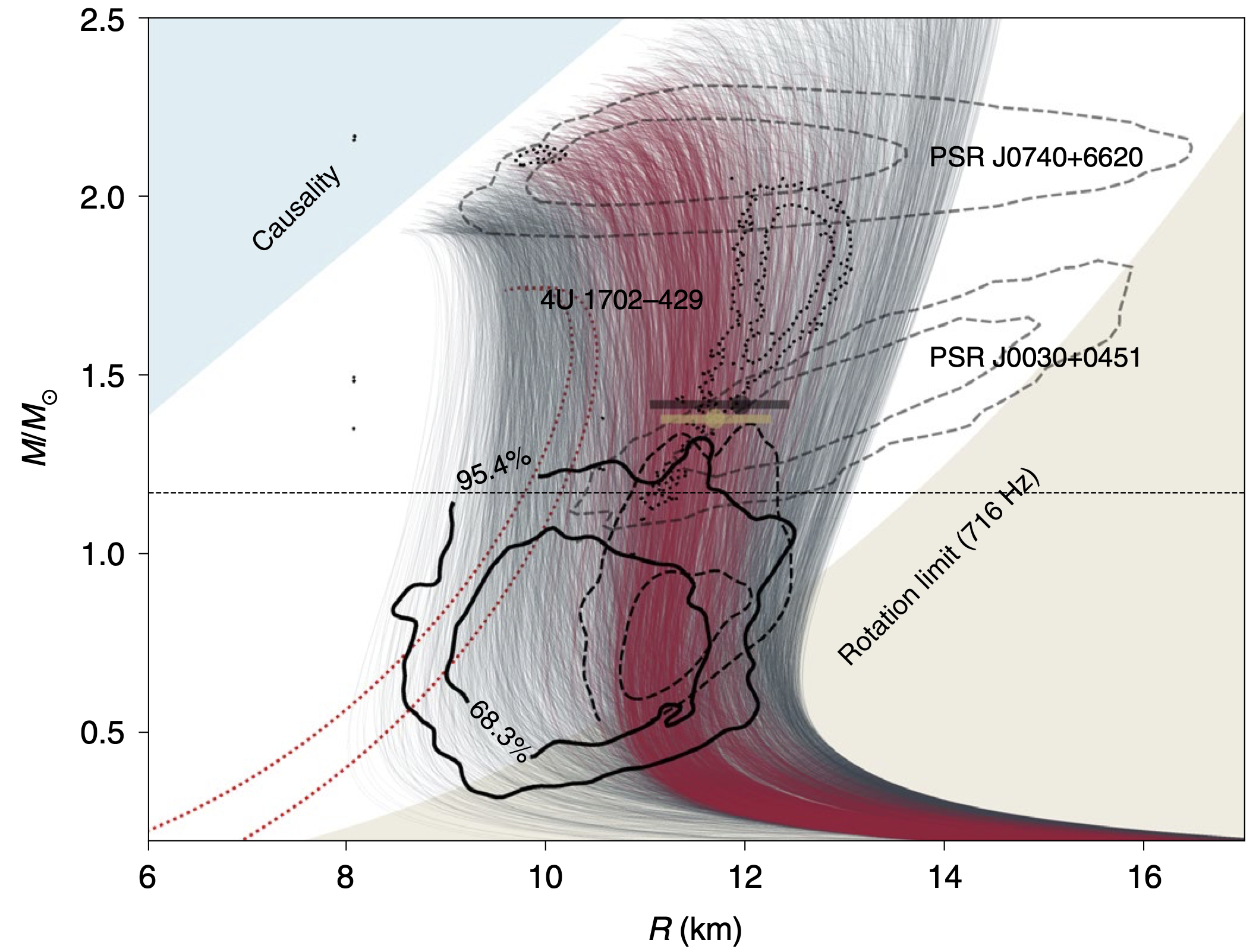 We have basically re-visited the old friend, the CCO in HESS J1731-347 in order to use all available constraints on spectrum and distance to the source and improve estimates of mass and radius of the neutron star. Which turned out to be, well... strangely light! It might be the lightest neutron star known, in fact. Or even some more exotic object! The paper attracted quite a bit of press-coverage including press release by the Univeristy, getting me some interviews/outreach (New scientist, Sky&Telescope,phys.org and more) and ranking high in Altmetric:
We have basically re-visited the old friend, the CCO in HESS J1731-347 in order to use all available constraints on spectrum and distance to the source and improve estimates of mass and radius of the neutron star. Which turned out to be, well... strangely light! It might be the lightest neutron star known, in fact. Or even some more exotic object! The paper attracted quite a bit of press-coverage including press release by the Univeristy, getting me some interviews/outreach (New scientist, Sky&Telescope,phys.org and more) and ranking high in Altmetric:
Sep 01, 2022
And now my share of the X-ray polarization pie. A very important source for me (did my Bachelor on it!) and for the IAAT: Her X-1.
In the latest Nature Astronomy paper we use phase-resolved X-ray polarimetry to constrain the geometry of the pulsar.
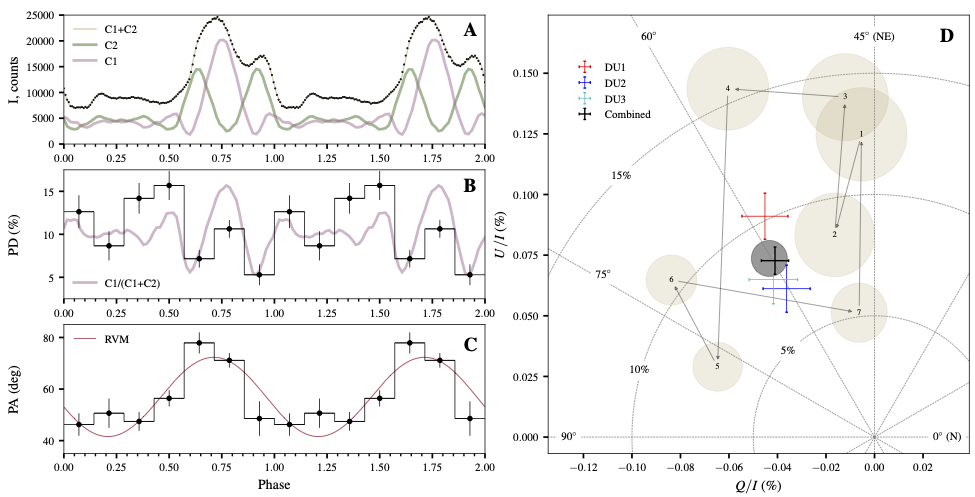
We also add old optical polarimetry to the mix to show that the spin axis of the neutron star is misaligned with its orbital axis - a condition required to allow its free precession (suggested previously to explain observed changes of the pulse profile shape over the 35d super-orbital variability cycles).
More observations are coming next year, and of course more observations of X-ray pulsars by IXPE too! The paper attracted quite a bit of attention, so we also have a press-release from the University and NASA
Aug 29, 2022
Another paper on observations of 1A~0535+262 with Insight-HXMT in 2020. This time we looked at evolution of the pulse profiles:
 The observed changes indeed seem to confirm our previous spectra-based suggestion that the source did transition to super-critical state in this outburst!
The observed changes indeed seem to confirm our previous spectra-based suggestion that the source did transition to super-critical state in this outburst!
Aug 22, 2022
And now the first Imaging polarimetry result from IXPE!
Jakko Vink has just published an ApJ paper describing first infant steps towards the true spatially-resolved analysis of supernova remnants.
 We're still talking about two sigma detection in individual pixels, but overall significance is of course much higher. And that's the first time X-ray polarimetry was used to probe magnetic field structure in an SNR!
Observed polarization appears to be in line with what radio (still bringing some new insights), which is also a good thing!
We're still talking about two sigma detection in individual pixels, but overall significance is of course much higher. And that's the first time X-ray polarimetry was used to probe magnetic field structure in an SNR!
Observed polarization appears to be in line with what radio (still bringing some new insights), which is also a good thing!
Aug 03, 2022
Juhani Mönkkönen has finally managed to wrap-up and push his main PhD paper through all the hurdles of complex data analysis and refereeing process.
I were lucky to be with Sergey Tsygankov at the beginning of the project which we initially wanted to do ourselves, but failed miserably :) So, the more important is the conclusion, congratulations! The basic idea of the paper is that properties of the aperiodic variability appear to be similar and (unsurprisingly) driven by same physics in many kinds of compact objects, and can be used to probe interaction of the magnetosphere with accretion flow.
 In particular, Juhani used the observed power spectra of Her~X-1 to argue for presence of strong multipole field components in the source.
In particular, Juhani used the observed power spectra of Her~X-1 to argue for presence of strong multipole field components in the source.
Jul 19, 2022
And another IXPE paper!
This time on Seyfert galaxy MCG-05-23-16. We report on the first observation of a radio-quiet Active Galactic Nucleus (AGN) using polarized X-rays. Half a megasecond of IXPE time plus some XMM and NuSTAR. Only an upper limit on the polarization, but that's valuable as low polarization might indicate a lamp-post and a conical geometry of the corona (and if it's a slab, then some rather strict constrains on inclination must be satisfied). Stay tuned for more IXPE papers!
Jul 14, 2022
So, it's official - IXPE opened a new observational window in form of X-ray polarimetry and started to pump-out results!
Well, in this particular case the main result is not detection, but that's just a beginning!
Jun 12, 2022
The Swift J0243.6+6124 is one of my favorite sources, linking normal pulsars with PULXs and one where we found solid evidence for presence of radiatively-pressure-dominated accretion disk normally reserved for BH systems. Now with the help of Insight-HXMT it was possible to detect also the highest-energy-to-date cyclotron line in spectrunm of the source!
 The results are reported in Chinese-led paper where we also discuss implications of the discovery. Basically, it does not simply imply that the field is strong, it also means that the field is strongly non-dipolar!
The results are reported in Chinese-led paper where we also discuss implications of the discovery. Basically, it does not simply imply that the field is strong, it also means that the field is strongly non-dipolar!
May 11, 2022
Sometimes Nature just throws it to your face! When the event was detected by eRosita near time analysis team, everyone was rather surprised by the mere appearance of it. It did not take long to associate what we saw with the flurry of ATELs reporting the flash of YZ Reticuli. Which was big, because it was clear that we observed the ignition flash of a novae, something which was (unsuccessfully) searched for more than thirty years! Which made the work to make it to the nature cover!

A very lucky coincidence taking into the account the comparatively narrow field of view of eRosita and the fact that the flash is such a short event (hours). Indeed, evein if eRosita is an all sky survey, instantaneous field of view is just shy of two moons in diameter, and given point on the sky is scanned only twice a year, but this time it was in the right place at the right time!
Of course, detection was just a beginning of the very complex work led by Ole König from FAU, which allowed us not only to recover the time and place of event, but also the decently constraining X-ray spectrum from the extremely piled-up data. The phenomenon of "pile-up" occurs in X-ray CCD detectors when the source is too bright and more than one photon hits given pixel between the readout cycles, so while we still know the total energy received, we loose track of the number of photons carrying it and thus can not recover their energy distribution. The only thing is - we now can! Ole modeled the response of the instrument to extremely bright source taking this effect into the account, which allowed to recover the true spectrum of the source, and measure its temperature (327000K), luminosity (52000 times the Sun!) and radius of 50000 km for the white dwarf.
This implies that eRosita has indeed detected the "naked" photosphere just after the released energy reached its surface and before the main expansion of the envelope, i.e. a Nova in fireball phase. The results are published in Nature today. The full press releases from Uni Tübingen and FAU, as well as journalist's take on the paper from Sky&Telescope and inverse.com are also in place :)
May 02, 2022
Alexander Musthukov and Sergey Tsygankov just posted a nice review on X-ray pulsars on arxiv
which is going to become a part of the upcoming Handbook of X-ray and Gamma astronomy by Springer I am currently editing. Feel free to recommend to your students!






 This, and lack of polarization variability, basically means that observed X-rays come from shocks near the very engine of the Blazar whereas emission in other bands comes from further away! A solid result showcasing the power of X-ray polarimetry. Congratulations to Laura Di Gesu, the first author of the
This, and lack of polarization variability, basically means that observed X-rays come from shocks near the very engine of the Blazar whereas emission in other bands comes from further away! A solid result showcasing the power of X-ray polarimetry. Congratulations to Laura Di Gesu, the first author of the  We have basically re-visited the old friend, the CCO in HESS J1731-347 in order to use all available constraints on spectrum and distance to the source and improve estimates of mass and radius of the neutron star. Which turned out to be, well... strangely light! It might be the lightest neutron star known, in fact. Or even some more exotic object! The paper attracted quite a bit of press-coverage including press release by the
We have basically re-visited the old friend, the CCO in HESS J1731-347 in order to use all available constraints on spectrum and distance to the source and improve estimates of mass and radius of the neutron star. Which turned out to be, well... strangely light! It might be the lightest neutron star known, in fact. Or even some more exotic object! The paper attracted quite a bit of press-coverage including press release by the 
 The observed changes indeed seem to confirm our previous spectra-based suggestion that the source did transition to super-critical state in this outburst!
The observed changes indeed seem to confirm our previous spectra-based suggestion that the source did transition to super-critical state in this outburst! We're still talking about two sigma detection in individual pixels, but overall significance is of course much higher. And that's the first time X-ray polarimetry was used to probe magnetic field structure in an SNR!
Observed polarization appears to be in line with what radio (still bringing some new insights), which is also a good thing!
We're still talking about two sigma detection in individual pixels, but overall significance is of course much higher. And that's the first time X-ray polarimetry was used to probe magnetic field structure in an SNR!
Observed polarization appears to be in line with what radio (still bringing some new insights), which is also a good thing! In particular, Juhani used the observed power spectra of Her~X-1 to argue for presence of strong multipole field components in the source.
In particular, Juhani used the observed power spectra of Her~X-1 to argue for presence of strong multipole field components in the source. The results are reported in Chinese-led
The results are reported in Chinese-led 